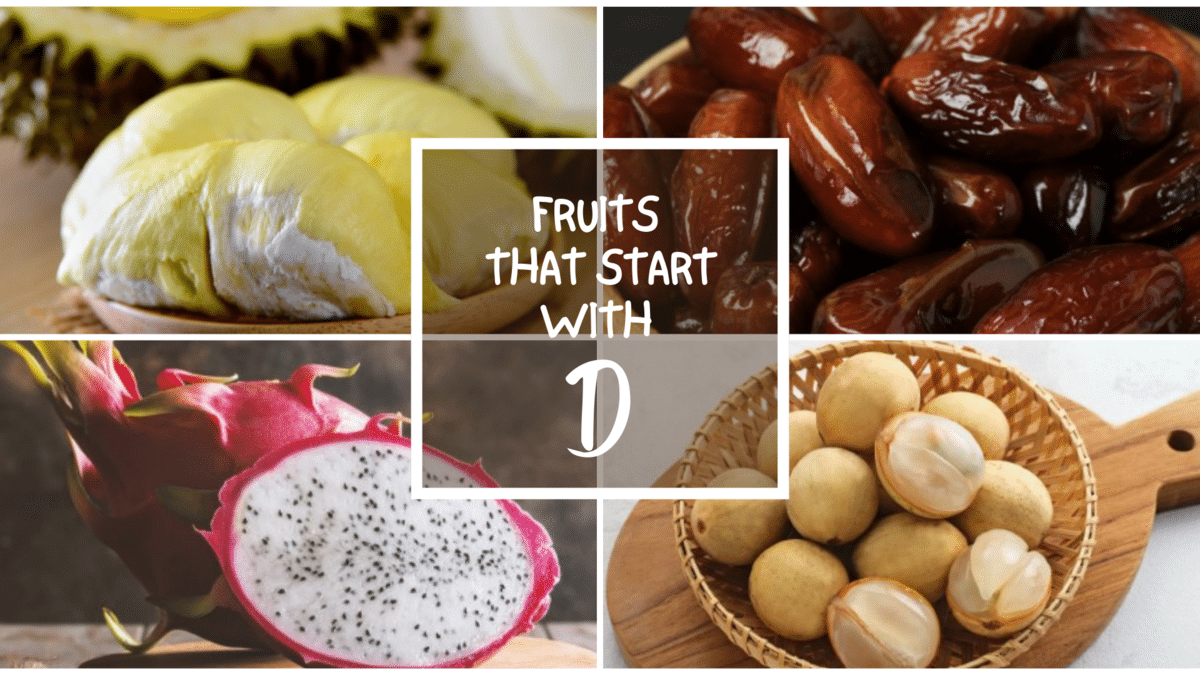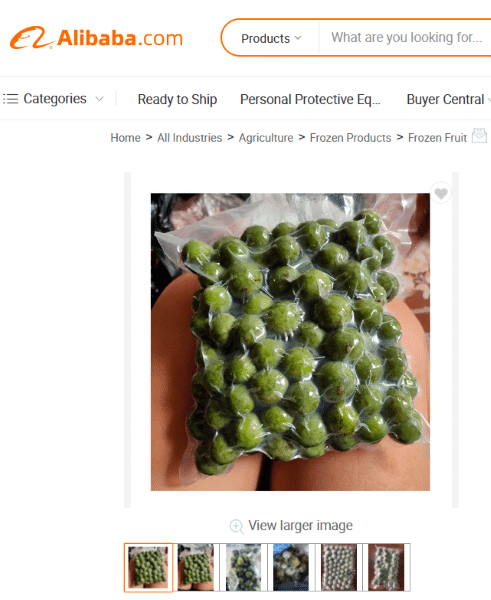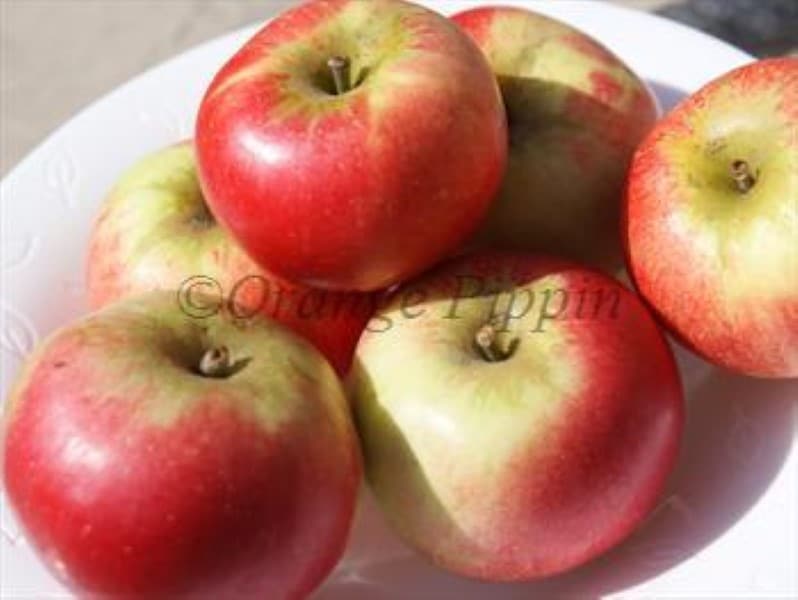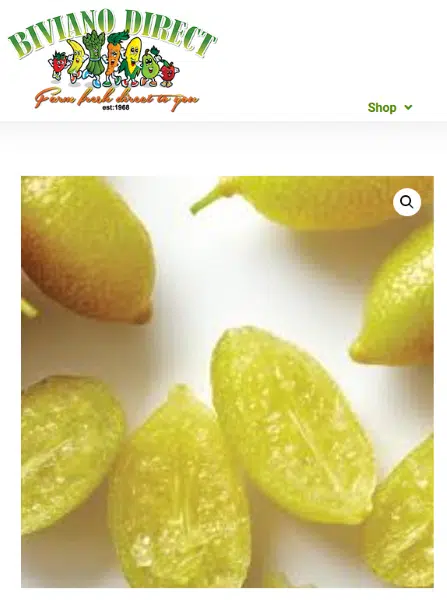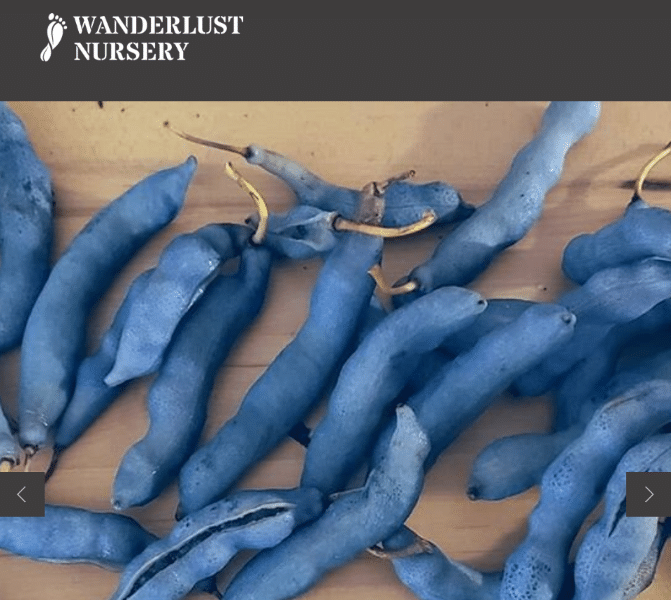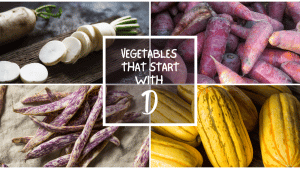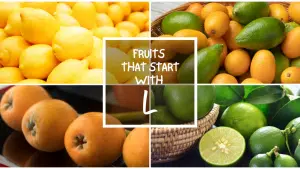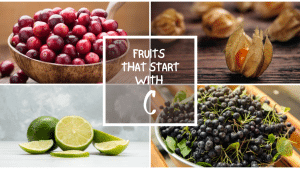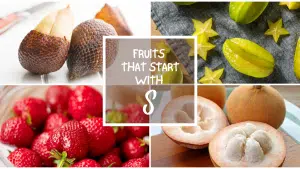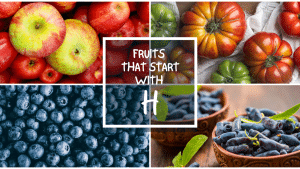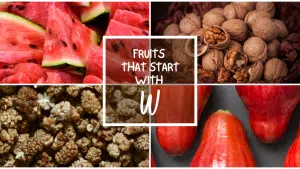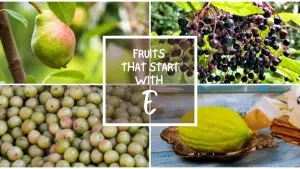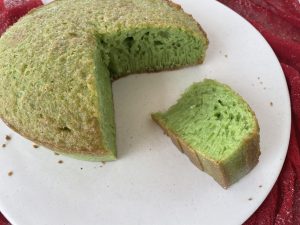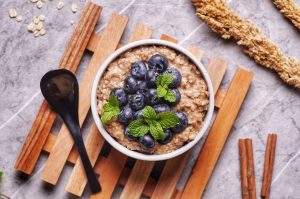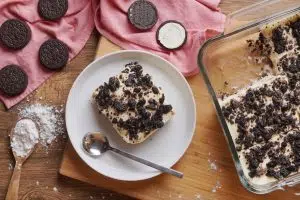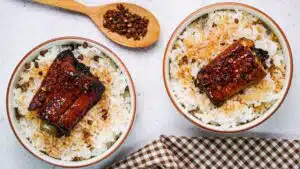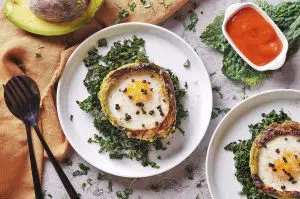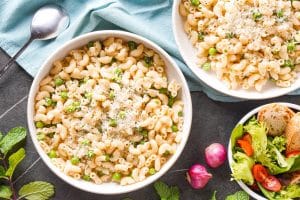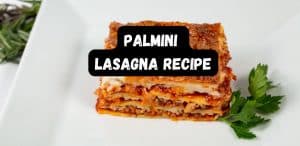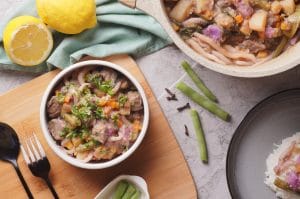All The Fruits That Start With D
Important Note: When you buy through our links, we may earn a commission. As an Amazon Associate we earn from qualifying purchases. Content, pricing, offers and availability are subject to change at any time - more info.
Fruits are very important in our lives because of their nutritional value, making us healthy and resistant to several diseases. There are different types of fruits worldwide that you cannot know all overhead.
We are all familiar with fruits high in vitamin C overall, but if asked to identify a fruit that begins with the letter D, we may be unable to do so. Therefore, to prevent you from such situations, here is a well-analyzed list of fruits beginning with the letter D.
- Durian
- Duku
- Dragon Fruit
- Dracontomelon
- Double Coconut
- Discovery Apple
- Dinosaur Eggs
- Dodder Laurels
- Dewberries
- Desert Lime
- Desert Quandong
- Desert Banana
- Dekopon
- Dead Man’s Fingers
- Davidson’s Plum
- Darwin’s Barberry
- Date
- Date Plum
- Damson Plum
- Dabai Fruit
- Dangleberry
- Desert King Fig
- Darling Plum
- The Final Letter
Durian
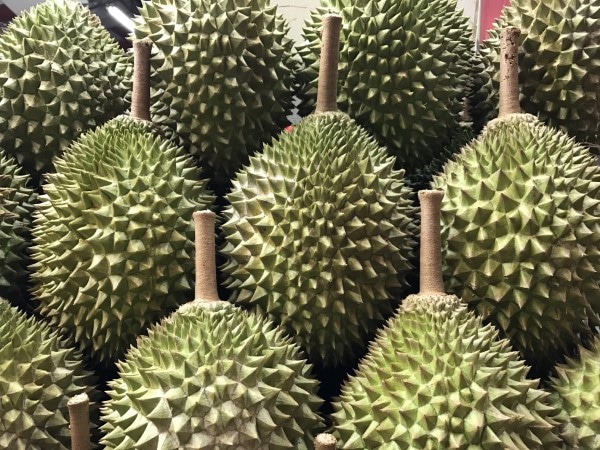
Durians (Durio zibethinus) are prickly, big fruits endemic to Southeast Asia. It is called the “King of Fruits” in certain areas. Their pale brown rind conceals streaks of yellow or crimson meat within. The fruits have a notoriously pungent stench characterized as delightful to oniony by many and suggestive of raw sewage and sour vomit by others.
Despite differing perspectives on the fruit’s stink, most believe its flavor is valuable in these awful agonies. It has a buttery texture and a creamy, almondy taste, and notes of vanilla and caramel. Durian is mainly used in desserts or eaten raw.
Although it has an unpleasant odor, Durian is incredibly nutritious, much more so than most other fruits. Naturally high in iron, vitamin C, and potassium, Durian boosts muscular power and skin health and even decreases blood pressure. Likewise, one tiny Durian has enough dietary fiber, your whole daily nutritional need.
Duku
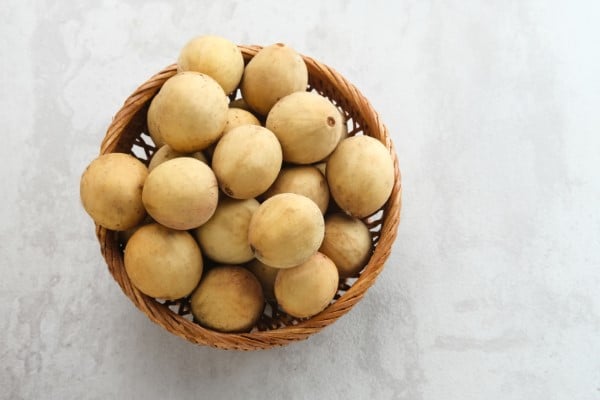
Duku fruits (Lansium domesticum) bloom in enormous clusters of tiny to midsize spherical fruits with thick, leathery skin. The fruits are indigenous to Southeast Asia and have thrived in nature since olden history.
The fruits were subsequently transported through trade routes to Asia and Central America. They have a delicate yellowish-tan tint that becomes somewhat brown with age. Inside, this strange fruit looks like pulpless, colorless citrus with discrete areas of transparent flesh.
On the nutrition side, Duku is high in vitamins A, B, C, and E and fiber, iron, phosphorus, potassium, and calcium. Despite its unusual appearance, Duku fruit has a familiar flavor. When ripe, the taste is sweet-tart and has been likened to grapefruit or pomelo. They are indigenous to Asia, where they are mostly eaten raw.
Dragon Fruit
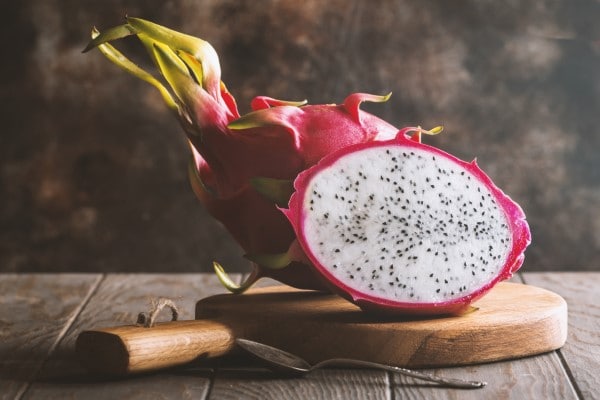
Despite being less prevalent in corporate grocers, dragon fruit (Selenicereus undatus) is immediately identifiable and maybe the nicest looking fruit in the world.
The fruit features a fuschia-colored bulbous body coated with flaming green flame-like scales. The inside, mushy flesh is white and covered with lots of tiny black edible seeds.
Dragon fruit tastes like a cross between a kiwi and a pear. It is mostly utilized to flavor beverages and juices. The cactuses that yield this fruit are native to the Americas but have spread much over the globe. Protein, fiber, iron, and antioxidants are abundant in dragon fruit.
Dracontomelon
Dracontomelon is a tiny spherical fruit with tough skin and an inside star-shaped design. They are green, pink, or yellow in appearance and have an extremely sour taste.
In Vietnam, Cambodia, and China, these unusual fruits normally grow in the wild and used as ornamental trees. The fruits are typically used as a caustic agent or candied and consumed as a delicacy.
Double Coconut
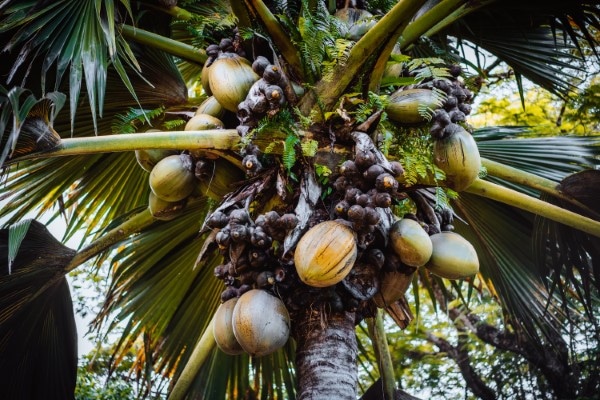
The double coconut (Lodoicea maldivica) holds the record of having the biggest seed in the universe. The outside fruit mimics a regular coconut, but the inside seed is bi-lobed, compressed, and resembles a set of human lungs.
Double coconuts are endemic to just a few islands in the Somali Sea, although they are widely available in US supermarkets. Because these coconuts do not float, they have not spread with the same zeal as other palm species.
People with diabetes may lower the amount of sugar in their urine by drinking a decoction of the fruit’s husk and kernel. The kernel is a febrifuge, which means it helps to relieve fever.
Discovery Apple
The discovery apple (Malus domestica ‘Discovery’) is not as well-known as the red delightful or granny smith, but it is good to look for if you want crisp, sweet apple types. The apple is on the lower side and seems more squashed than spherical.
It is widely cultivated on a limited scale in the UK because, unlike practically all other early apple types, it has a good life span of around a week.
However, the discovery apple’s mussed interior flesh is what truly distinguishes it. Bright red spots are expected beneath the skin and surrounding the seeds with white meat.
The fruit has a crisp, tangy, somewhat strawberry-like taste when eaten soon after harvest. It is available at various grocery stores in the United States that import it.
Dinosaur Eggs
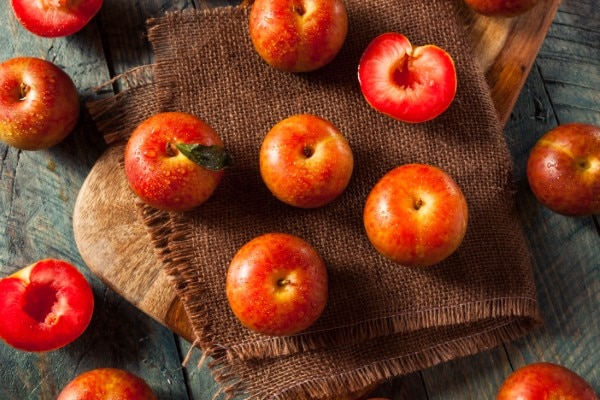
Dinosaur egg fruits, sometimes known as pluots, are a cross between an apricot and a plum. First-generation crosses are plumcots or apriplums, while new generations are called pluots. Floyd Zaiger, a California breeder, grows and sells them in numerous US grocery stores.
These fruits feature plum-like slippery skin with uneven red-yellow color, so the term “dinosaur egg.” The taste is sweeter than apricot and missing the tartness associated with plums. They are usually eaten raw, but they may also be processed into jam.
The fruits have a strong taste, are high in vitamins A and C, have a low-fat level, and are small in salt and cholesterol. They are incredibly delicious due to the high amount of sugar, yet each one only contains approximately 40-80 calories based on size.
Dodder Laurels
Dodder laurels (Cassytha pubescens) are parasitic vines found in various parts of the globe. Many types have edible fruits that look like miniature grapes or colorless blueberries.
These fruits are not extensively harvested but are foraged by various indigenous people in the wild. Aboriginals in Australia often consume the fruit uncooked, and the fruit is touted as an aphrodisiac in the Caribbean. Dodder laurel is recognized for its diuretic qualities and its usage as an astringent. It promotes faster digestion and speeds up the body’s metabolic process.
Dewberries
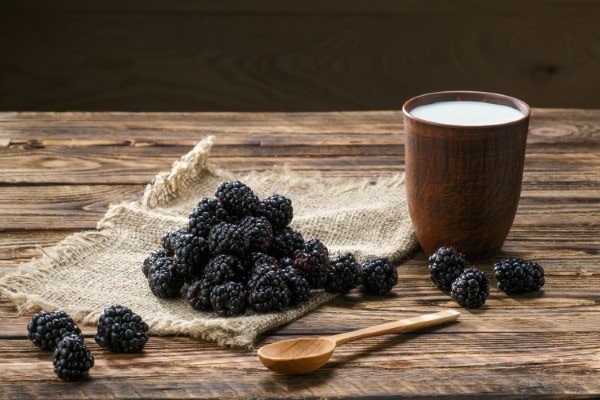
Dewberries (Rubus caesius), sometimes referred to as wild blackberries, are strongly linked to commercial blackberries. The fruit is smaller and less tasty, and the plants grow horizontally rather than erect.
These wild blackberries grow all over the northern hemisphere and yield many fruits in the spring. They are collected and turned into jams, baked items, or eaten fresh from the fruit bowl, then retailed in several US supermarkets and groceries.
Many people include dewberries in their meals to mitigate cancer from developing. All of the antioxidants in them assist in minimizing oxidative stress, which is often responsible for cancer formation.
Desert Lime
The desert lime (Citrus glauca) is an Australian citrus fruit. It has several adjustments to the harsh climate of the Outback, such as the flexibility to lose its leaves and survive on its emerald bark during dry spells.
These trees have little, pale green fruits that look like tanned limes. They are juicy and delightfully acidic and are utilized in the same manner as actual limes are.
Desert lime is a high-calcium snack with high quantities of vitamin C, vitamin E, and lutein, a component that has a great role in eye health and wellbeing). Likewise, it includes a significant potassium and sodium balance, which may aid in blood pressure reduction.
Desert Quandong
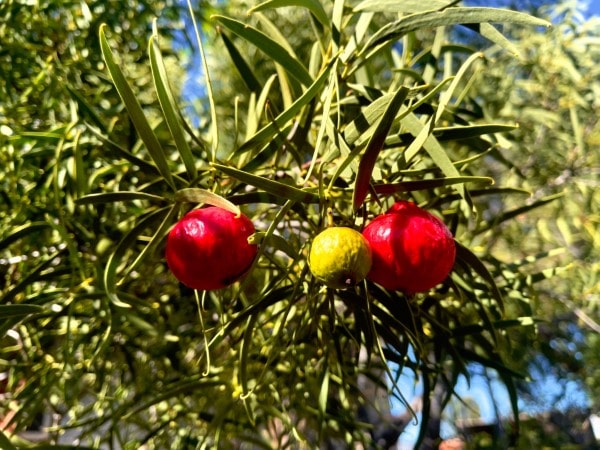
The arid quandong is another Australian native D fruit (Santalum acuminatum). The fruit is roughly the size of a ping-pong ball and has a nut that looks like a cross between a walnut and a brain.
While this exotic fruit is not often cultivated outside of Australia, it is trendy in exotic fruit stores across the globe. Quandong is strong in vitamin C and tastes like a cross between peach and rhubarb. It is commonly consumed raw or as a flavoring agent in many Australian recipes.
Desert Banana
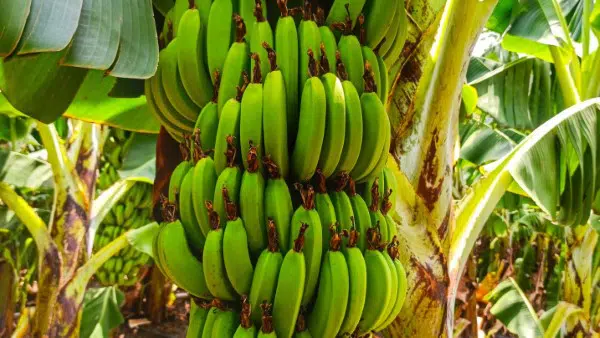
Desert bananas (Musa acuminata), often referred to as bush bananas, are Australian fruit. Despite their name, they do not look like bananas and don’t have a similar flavor. The surface of these pendulum-shaped fruits is pale green, with scale-like seed clusters within.
Indigenous peoples have traditionally consumed every part of the desert banana plant, from the roots to the blooms and leaves.
When the fruits are small, they are eaten raw, and when they are ripe, they are cooked on the hot ground near the fire. They have a mellow taste that is comparable to zucchini in either situation.
Dekopon
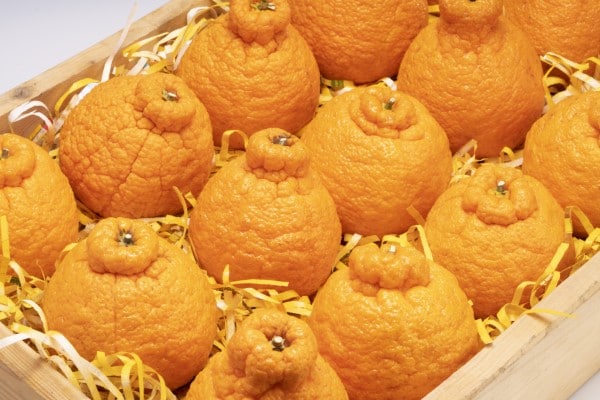
The Dekopon (Citrus reticulata ‘Shiranui’) is a seedless satsuma orange that contains renowned variants such as mandarin and tangerine. This little citrus resembles a tangelo with a spherical body and an extended button top.
Dekopon fruit is sweeter than other satsuma cultivars, explaining its global popularity. These delectable fruits, hybridized initially in Japan, may now be purchased in stores throughout the United States.
One medium-sized Dekopon contains full of the daily recommended amount of Vitamin C. They are low in calories and high in potassium, fiber, carbohydrates, protein, and vitamin A. Vitamin C has a significant antioxidant impact and increases resistance to illnesses such as colds.
Similarly, vitamin C’s antioxidant impact prevents spots and folds. Therefore, it may be predicted to have a lovely skin effect.
Dead Man’s Fingers
While it may not have the most appealing name, the fruit of dead man’s fingers (Xylaria polymorpha) is delicious. These deep blue, lengthy fruits bloom in threes and have a soft exterior that feels suggestively skin-like, thus the name.
Inside is a transparent viscous pulp studded with many black seeds. The pulp is somewhat sweet, like cucumber or melon. While not generally recognized beyond their native Asia, these frost-tolerant trees are sometimes planted as decorative plants in the United States.
Davidson’s Plum
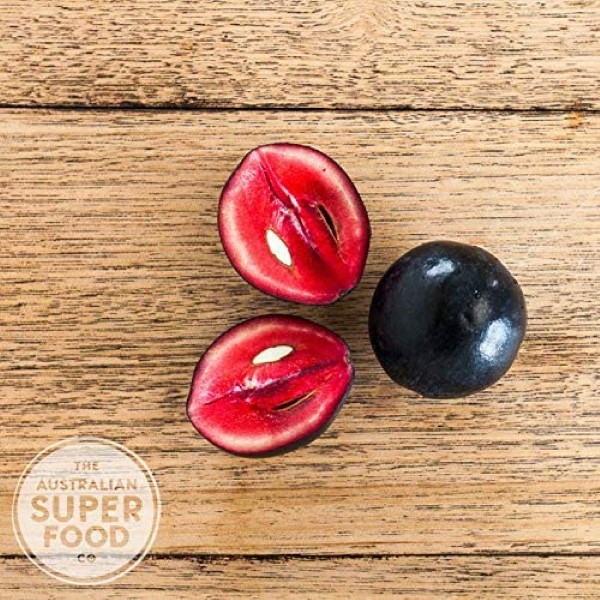
The native Australian Davidson’s plum (Davidsonia) is not similar to the real plum that flourishes in Europe. The fruits are regarded as among the nicest of the local plums. The dark purple fruits have soft juicy flesh with solid acidity. The scent is earthy, similar to raw beetroot, with subtle pickled undertones. They both have rich reddish-purple flesh, but the Davidon’s plum lacks the core pit that real plums have.
The skin layer is silky and tight but with a fibrous, somewhat stiff nature that is mainly coated with a blue-grey bloom to shield the surface from dehydration, insects, and pathogens. The brilliant red to ruby-toned flesh under the skin is watery and soft, with a juicy, sensitive quality. These pleasantly tart fruits are commonly used in baking, jams, sauces, yogurt, and ice cream.
Davidson plums are high in anthocyanins which are present in the fruit’s-colored skin. Anthocyanins have antioxidant capabilities that protect from harmful free radicals and help minimize pain. The fruits are also high in vitamin C, which helps improve immune function, and potassium, which helps regulate fluid levels in the body. Likewise, Davidson plums include lutein, a carotenoid that aids in the maintenance of eye health.
Darwin’s Barberry
Darwin’s barberries (Berberis darwinii) have bluish-purple fruits comparable in size to blueberries. They have a sour, tangy taste and are commonly used to produce syrup, jams, and pies.
These fruits are native to Chile and Argentina but have been established in the United States, regarded as invasive species. Despite being commonly employed as an ornamental shrub surrounding shopping malls in temperate regions, foragers generally ignore these berries because of the prickly leaves and branches that encircle them.
Barberries are packed in nutrients. They are high in carbohydrates, fiber, and various vitamins and minerals. Berries, in particular, are high in vitamin C, an antioxidant that may help shield from cell injury, which may contribute to heart disease and cancer (2).
Date
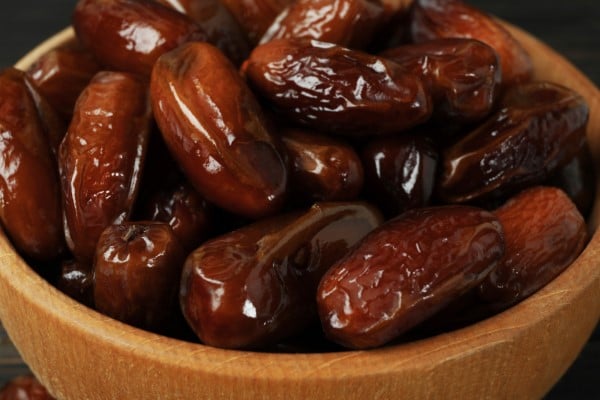
The date is very well for the D fruits (Phoenix dactylifera). Humans have been cultivating this uber-sweet shrunken fruit for centuries, which mimics a gigantic raisin. While the date palm tree’s origin is unknown, it most likely originated in the Middle East, North Africa, or India.
Dates may be consumed raw, packed with savory contents such as soft cheese, or cooked in traditional Indian, Middle Eastern, and African dishes.
Dates include nutrients that are good for your bones, such as phosphorus, potassium, calcium, and magnesium. Likewise, they contain vitamin K, which is required for strong, healthy bones.
Date Plum
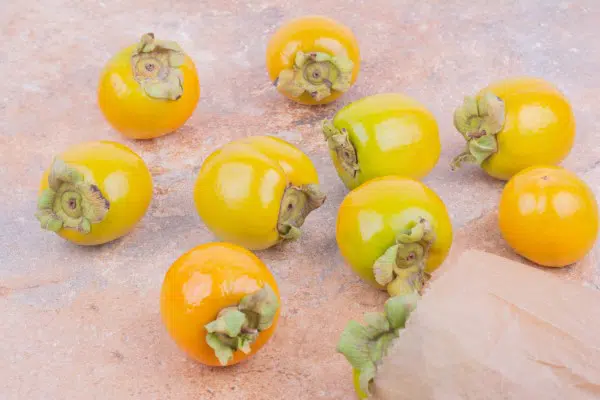
A date-plum (Diospyros lotus) is a persimmon fruit that is neither a date nor a plum. This ping-pong-sized yellow fruit resembles other fruit but tastes midway between the two. While date plums may be eaten fresh, they are usually dried to lessen their acidity and enhance their date-like sweetness.
Date plums are extensively grown in Southwest Asia and Southeast Europe, although available in numerous US stores.
The fruit’s leaves are abundant in antioxidants and anti-inflammatory compounds that benefit the body in various ways without causing harm.
Damson Plum
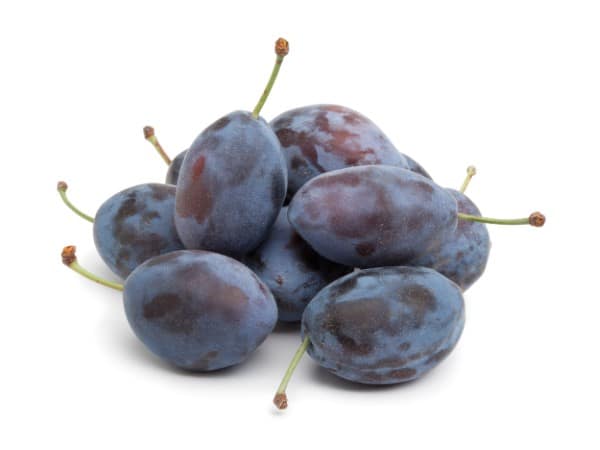
The real damson plum (Prunus domestica subsp. insititia) is a subspecies of the ordinary plum endemic to Great Britain. The bright blue ovoid fruit is commonly used to produce jams and preserves.
The damson has a highly acidic and tannic taste when eaten uncooked. In reality, damson is mainly used to define acidic, plum-flavored wines.
While the actual damson plum is only discovered in Europe, the jamblang fruit, which has a similar tart taste, is sometimes known as damson fruit throughout Southeast Asia. The good news is that the fruit is available in several US supermarkets.
Damson plums’ most significant health advantages are their capacity to promote digestion, reduce cholesterol and safeguard from heart disease. Similarly, they help improve bone strength, enhance energy, regulate sleeping patterns, lessen the risk of some cancers, and stimulate the immune system.
Dabai Fruit
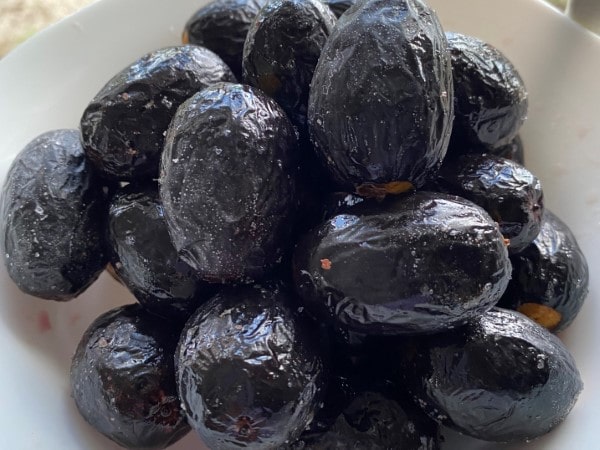
The unusual dabai fruit (Canarium odontophyllum) resembles a hybrid between a black olive and a grape. It has powdery black skin and a conspicuous yellow ring where the stem was connected on one end.
Dabai fruit thrives natively in Borneo and is expensive in local markets. It is enjoyed simple or with a dab of salt or soy sauce by those in the knowledge.
When consumed fresh, they are rock hard and have a subtle olive flavor. However, after scraping and immersing in hot water, they soften and acquire the distinct taste of cooked carrots with cream. Dabai fruit is abundant in calories, protein, fat, and minerals, including potassium, phosphorus, and vitamin.
Dangleberry
The dangleberry, often known as the blue huckleberry, is a delicious fruit produced by the Gaylussacia frondosa plant.
These are endemic to the Eastern United States and are frequently harvested wild; however, you may be able to get some at highway fruit stands at the correct time of year.
Dangleberries have a pleasant taste and may be used in jams, fruit salad, baked products, pancakes, or eaten raw, similar to blueberries.
Desert King Fig
The desert king is an actual fig tree that bears some of the biggest and most delicious fig fruits anywhere. The variety’s origins may be linked to the 1930s in Maderna, California.
These enormous pear-shaped fruits, like most figs, have rich pink-red flesh. They have a strawberry and mulberry taste and a silky texture that dissolves on the tongue.
Darling Plum
The delicious fruit of the beautiful plum tree thrives in the tropics and subtropics, so keep a sharp eye out if you are planning a trip to Florida or The Bahamas anytime.
These plums may be consumed raw and have a flavor similar to blueberries. The darling plum is available in several US supermarkets, where you can access them at an affordable price.
The Final Letter
Interestingly, almost all fruits starting with any letter are high in vitamin C. It is a water-soluble vitamin that is also high in antioxidants. Eating vitamin C-rich fruits and veggies is better because our bodies cannot retain and balance them naturally. The deficiency may cause anemia, scurvy, bleeding gums, and illnesses.
